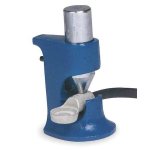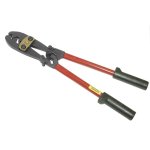Kushtaka
New member
- Joined
- Dec 17, 2013
- Messages
- 648
- Reaction score
- 0
- C Dory Year
- 1993
- C Dory Model
- 22 Cruiser
I think maybe I had some grease in my terminal end when I made the cable? I used good 6AWG marine grade cable, tinned and crimped (with a bench vise) It just came out. I know exactly when I did it. I had my cables loose in the gunnels after some tidying work, and went to rebundle. I found a pair of cables in the run that were attached to nothing on both ends, so I removed them. I encountered a little resistance when pulling them through and gave it a tug when I probably shouldn't have. I ended up yarding on one of my big red battery cables. I thought it was a different one and checked to make sure it was ok, but I think I missed it. I just pulled the cable right out of the terminal.
It's all clean, looks fine in terms of oxidation, but there is some crud impregnated in the solder. As I said, probably grease.
I did check all of my other terminals and they all remain good, solid, low resistance connections.
I think I'll swap out the fuses on the ACR to circuit breakers. I didn't blow a fuse, but I like a switch much better. You can run out of fuses. Plus, I've had mine get moisture in them, just from humidity. I think I'll use a Blue Seas breaker!!
It's all clean, looks fine in terms of oxidation, but there is some crud impregnated in the solder. As I said, probably grease.
I did check all of my other terminals and they all remain good, solid, low resistance connections.
I think I'll swap out the fuses on the ACR to circuit breakers. I didn't blow a fuse, but I like a switch much better. You can run out of fuses. Plus, I've had mine get moisture in them, just from humidity. I think I'll use a Blue Seas breaker!!





